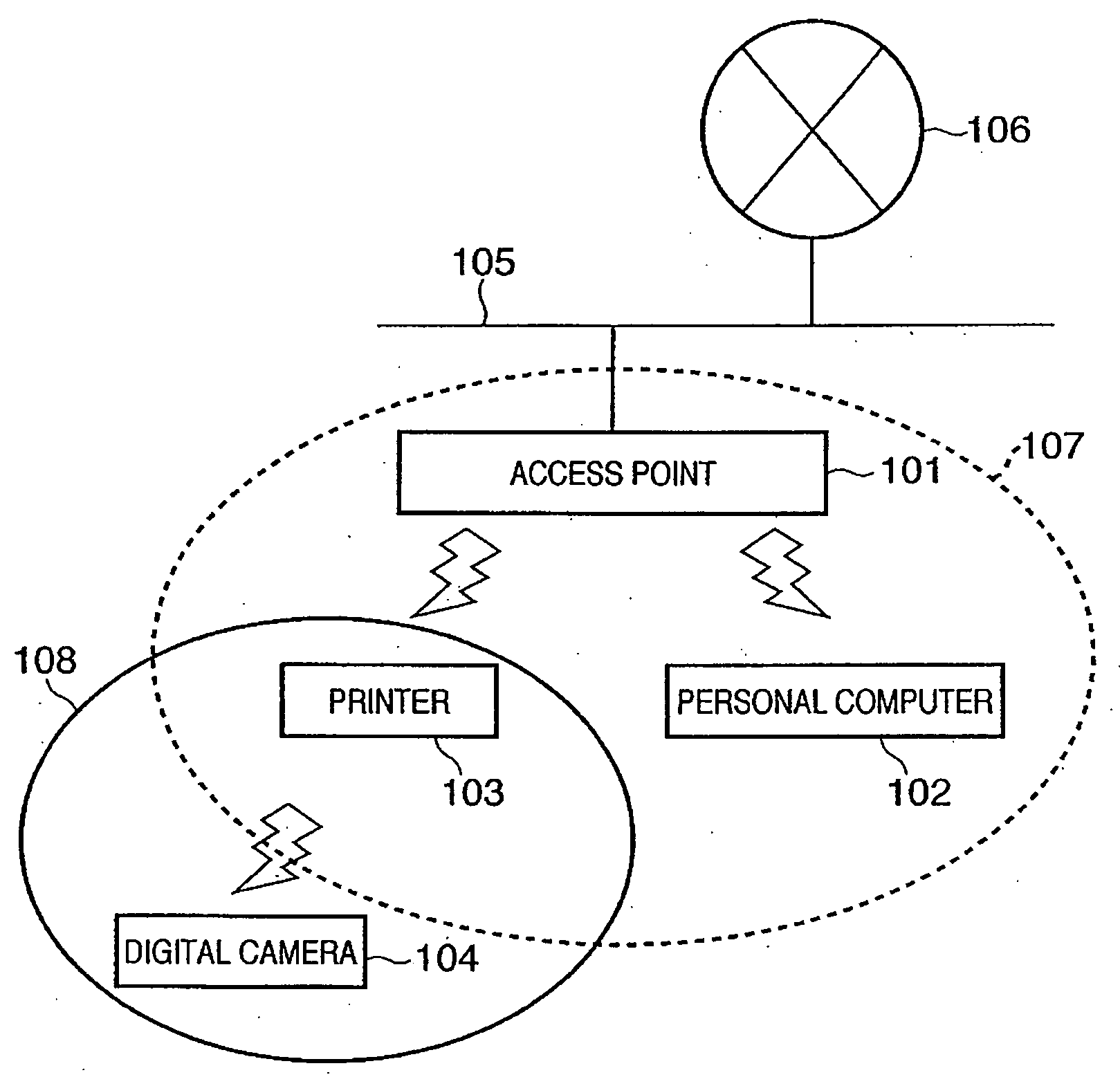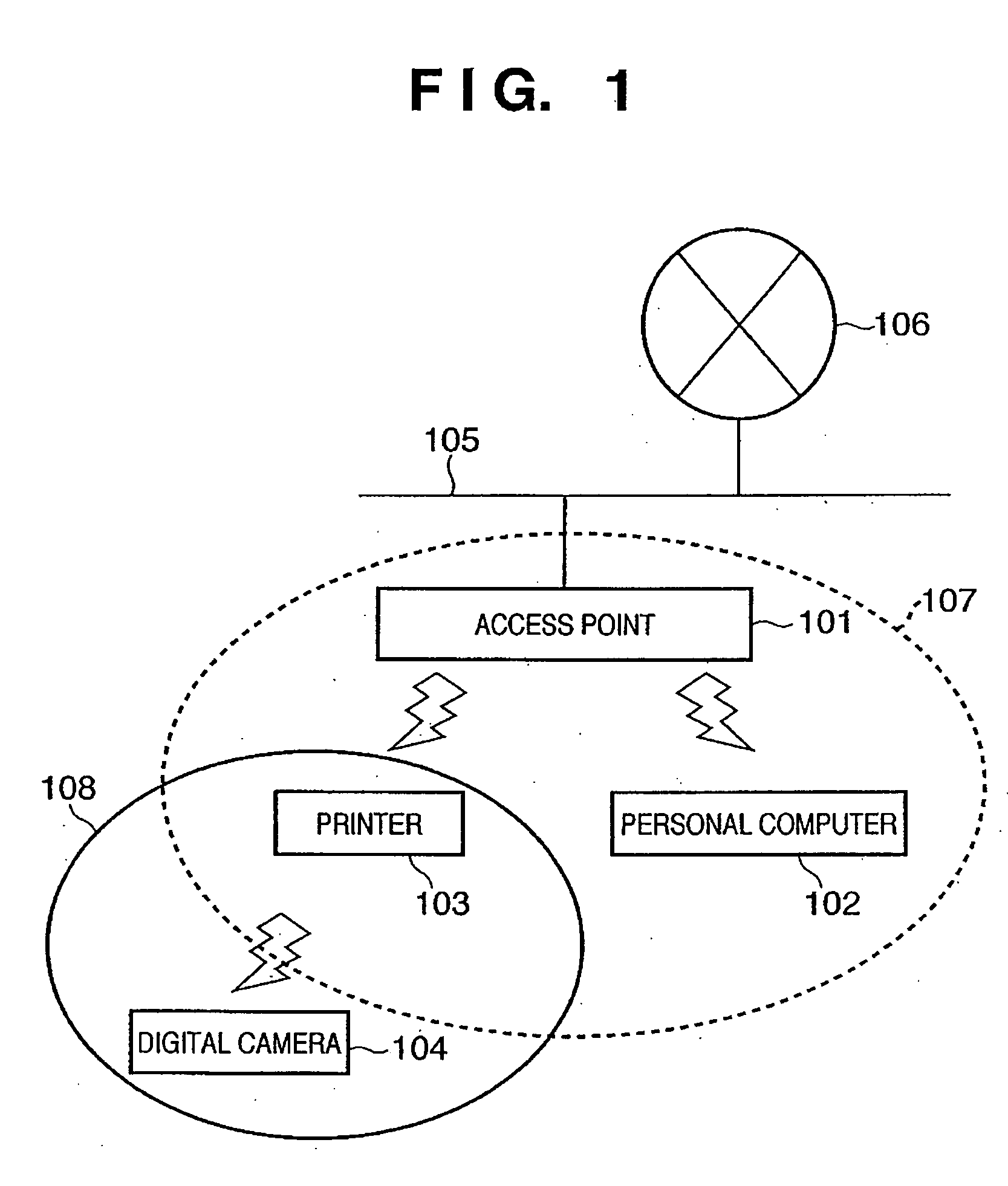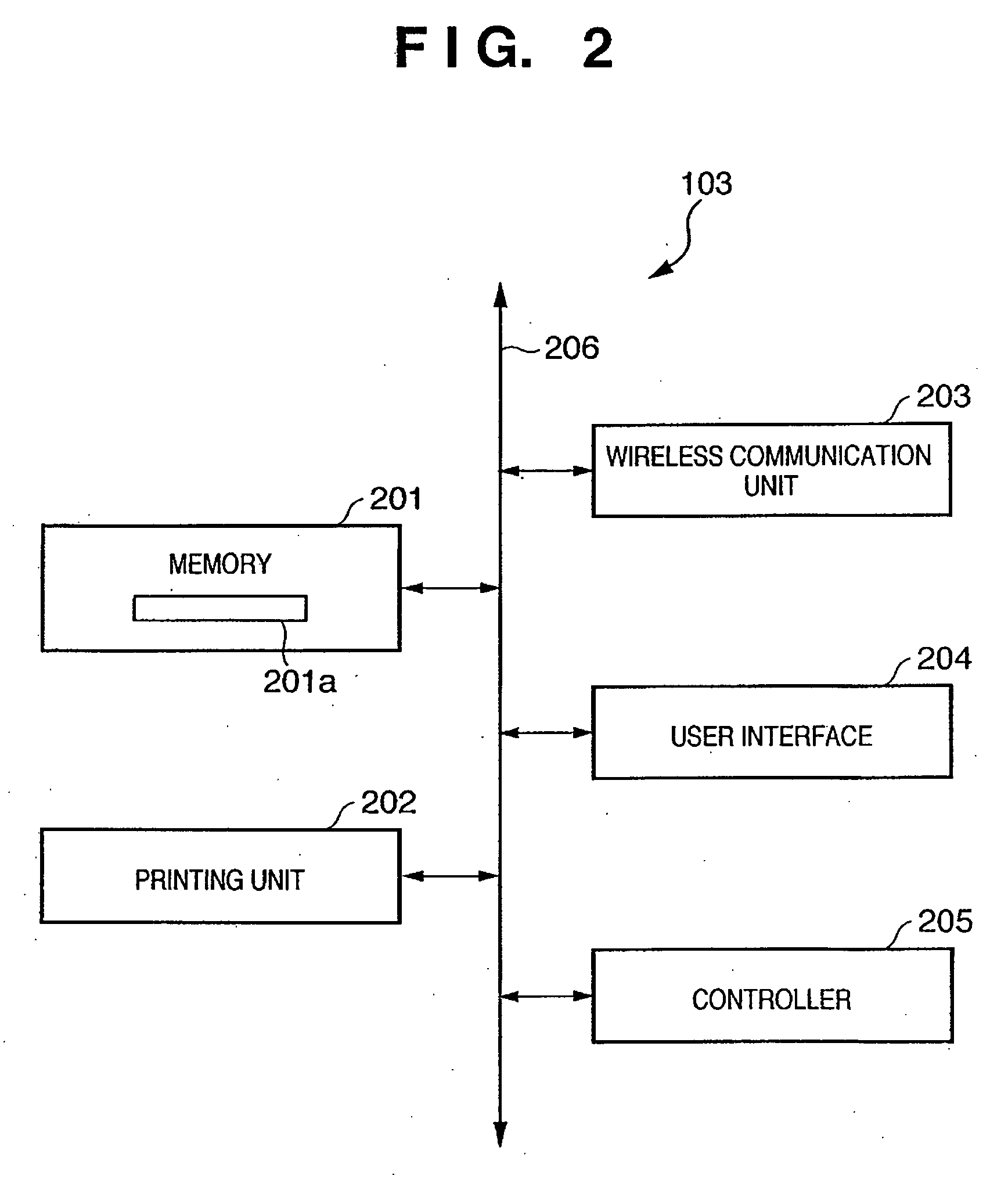Communication Control Method and Wireless Communication Apparatus
a communication control and wireless communication technology, applied in the field of network systems, can solve the problems of inability to send and receive meaningful data upon changing over the communication mode, and the time-consuming and laborious to send and receive data, so as to ensure the compatibility of data
- Summary
- Abstract
- Description
- Claims
- Application Information
AI Technical Summary
Benefits of technology
Problems solved by technology
Method used
Image
Examples
first embodiment
[0027]
[0028]FIG. 1 is a schematic view useful in describing the form of a network system to which the present invention is applied. The network system of FIG. 1 comprises an access point 101, a personal computer 102, a printer 103, a digital camera 104, a wired line 105 and the Internet 106. The access point 101, which is a central control apparatus in the infrastructure mode (also referred to as a “first communication mode”), controls the communication of each connected device and relays the data transmitted by each device. The access point 101 is connected to the Internet 106 via a wired line. The personal computer 102 has a communication function for performing communication in the first communication mode with the Internet and other terminals via the access point 101. The printer 103, which has a communication function, is capable of printing data that has been received via the access point in the infrastructure mode and data that has been transmitted from a directly connected t...
first modification of embodiment
[0056]The printer 103 may temporarily delete the function table 201a of FIG. 5 immediately before the beacon search is started at step 401 and may construct the function table 201a afresh. In this case, it is preferred that once communication in the ad-hoc mode has started, the printer 103 conduct a function search with regard all discovered terminals that are the transmission sources of beacons in the ad-hoc mode. The reason for this is that since the printer 103 processes a print request from one digital camera in the processing path illustrated in FIG. 4, there is the possibility that there will be a wireless communication terminal (digital camera) for which a print request is not processed or a wireless communication terminal (digital camera) that will be left standing for a prolonged period of time. Accordingly, in a case where it is determined at step 408 in FIG. 4 that there is no succeeding data, control returns to step 404 and a function search is executed with respect to t...
second modification of embodiment
[0058]A function search is initiated at step 404 in FIG. 4 from the printer 103 equipped with the communication function. On the other hand, a connection in the ad-hoc mode may be sensed, as by receiving a frame that is exchanged at the time of a connection at a terminal connected to the printer 103, and this may serve as a trigger to start the function search.
[0059]Further, instead of a beacon-frame search at step 401, a beacon information request and response sequence may be performed. In this case, the printer 103 transmits a beacon-information request frame that requests transmission of at least an SSID and communication mode. A wireless communication terminal that has received this beacon-information request frame transmits a beacon-information response frame, which contains at least an SSID and communication mode, to the terminal (printer 103) that transmitted the beacon-information request frame. The printer 103 that has received the beacon-information response frame creates ...
PUM
 Login to View More
Login to View More Abstract
Description
Claims
Application Information
 Login to View More
Login to View More - R&D
- Intellectual Property
- Life Sciences
- Materials
- Tech Scout
- Unparalleled Data Quality
- Higher Quality Content
- 60% Fewer Hallucinations
Browse by: Latest US Patents, China's latest patents, Technical Efficacy Thesaurus, Application Domain, Technology Topic, Popular Technical Reports.
© 2025 PatSnap. All rights reserved.Legal|Privacy policy|Modern Slavery Act Transparency Statement|Sitemap|About US| Contact US: help@patsnap.com



